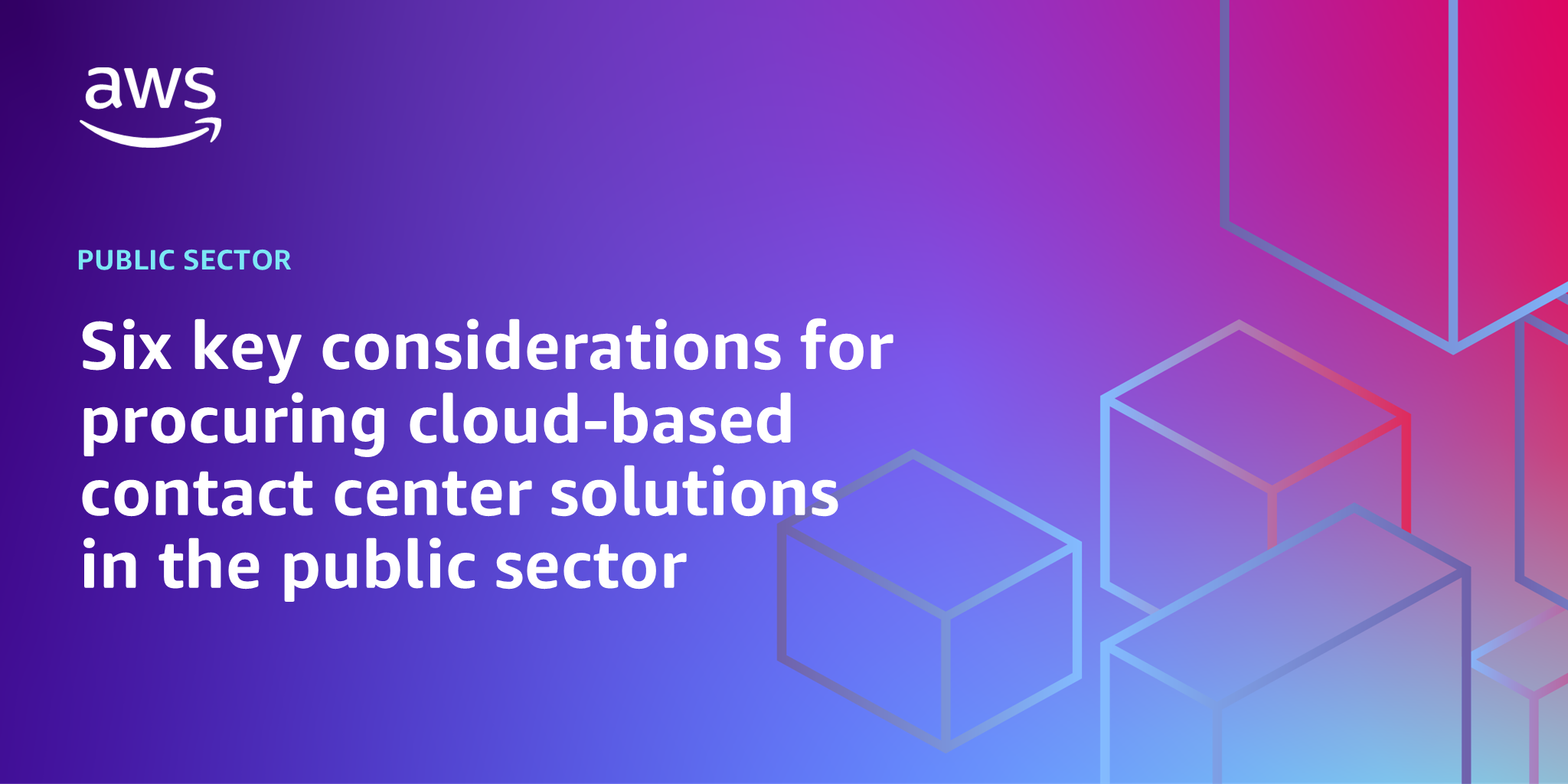AWS Public Sector Blog
Six key considerations for procuring cloud-based contact center solutions in the public sector
The shift to cloud-based Contact Center as a Service (CCaaS) solutions offers significant opportunities for public sector organizations to transform their operations, reduce costs, and improve citizen services. Amazon Web Services (AWS) provides innovative cloud technologies like Amazon Connect that can help organizations achieve these goals. However, traditional procurement approaches may not be well-suited for acquiring these modern cloud technologies. To help organizations navigate this transition, we’ve identified six key considerations when procuring a CCaaS solution like Amazon Connect:
- Plan early to maximize benefits: Start planning 18-24 months ahead to fully identify the transformative potential of CCaaS. Engage in pre-market discussions, run proof-of-concept trials, and consult broadly with internal stakeholders to build understanding and buy-in across your organization.
- Embrace consumption-based pricing: Traditional pricing models for contact centers are subscription-based, where customers pay a fixed monthly or annual fee linked to the number of licenses/user seats. Moving away from subscription models to pay-as-you-go pricing will enable your organization to respond more effectively to demand, and trial new features, such as the latest AI capabilities (for example, conversational analytics, agent assist, post-contact summaries, and agent forecasting/ scheduling.)
- Focus on outcomes, not prescriptive requirements: Cloud technologies evolve rapidly. Instead of specifying exact features, develop your specification based on the outcomes you want to achieve. This approach allows vendors to propose innovative solutions and to introduce the latest new features during your contract lifecycle—future-proofing your technology.
- Separate infrastructure from support services: Distinguish between the core CCaaS platform and additional professional services for design, deployment, and operations. This separation provides flexibility in how you source expertise and support. CCaaS solutions allow you to configure the technology to suit your needs, reducing reliance on third parties to make changes.
- Carefully consider integration approaches: Engage potential suppliers early to explore various integration options with your existing systems. Focus on desired outcomes rather than prescribing specific integration methods. Pre-market engagement with suppliers will allow you to explore the different integration options that are available.
- Leverage cloud-appropriate procurement frameworks: Use procurement frameworks designed for cloud services to align contract terms with the realities of cloud delivery models, including utility pricing, shared security responsibilities, and commercial item terms.
By adopting these considerations, public sector organizations can design more effective CCaaS procurements that unlock the full potential of cloud-based contact center solutions. This approach enables greater agility, cost-efficiency, and continuous access to innovative features that can dramatically improve both citizen and agent experiences.
To learn more about how cloud technologies like Amazon Connect can support your mission, contact AWS.
